With an already storied career as a stuntman and stunt coordinator on some of Hollywood’s biggest films and franchises, “Mission Impossible II”, “X-Men Origins: Wolverine”, “Men In Black”, “Get Shorty” and “Live Free or Die Hard” just to name a few, BRIAN SMRZ jumps into the director’s chair with the action-packed, high-octane, 24 HOURS TO LIVE. His second turn helming a feature (the first being “Hero Wanted” in 2008), Smrz was tapped for 24 HOURS TO LIVE by none other than “John Wick” producer Basil Iwanyk.

Starring Ethan Hawke as Travis Conrad, former soldier turned mercenary for shadow company Red Mountain in South Africa, Hawke imbues Travis with a humanity that is rare, playing to the weaknesses and foibles of man – be it within Travis or his enemies – to great result. We first meet Travis boozing it up with his father-in-law, unable to deal with life after the death of his wife and son the year prior, when he is summoned (aka “commanded”) by his buddy Jim per order of Red Mountain CEO Wetzler, that he must immediately come back into the fold and assassinate whistleblower Keith before he can testify in a UN investigation about the true goings-on at Red Mountain; goings-on of which Travis had no knowledge.
When intel reveals that Keith is being protected by Interpol Agent Lin and is in South Africa, Travis heads there as well, intent on finding and killing Keith. Needless to say all-out action ensues with a showdown between Travis and Lin in which Lin kills Travis. But, Travis doesn’t die. He is revived by a doctor who has been working on a Frankenstein-esque procedure for Red Mountain. The problem with the revival is that it’s temporary, only giving Travis 24 hours to live which is just enough time for him to complete a new assignment – get Lin to turn over information she has and then kill her. As insurance, Jim and company have kidnapped Lin’s son. The still-grieving father now faces his greatest moral dilemma. Does he complete his orders or, on learning the truth behind the Josef Mengele-like experimentation Red Mountain has been conducting, turn the tables and help Lin? Whatever the decision, 24 HOURS TO LIVE takes on a vitality and intensity in both story and action that is beyond exhilarating and ultimately thought-provoking.
In this exclusive interview with director BRIAN SMRZ, he talks about practical stunts and action, characters and casting, safety, sound, being organic and “winging it” at times, and more. . .

I am thrilled to see you in the director’s chair making this film, Brian. It’s an original premise, and you’ve got Ethan [Hawke], who has just really come into his own the past few years with action roles. How did this film come to you, Brian?
It came to me from the producers from “John Wick”, Basil Iwanyk and those guys. In all honesty, it came to me because “John Wick” was such a hit that they were looking for who else could we get from that action world to do a movie. So they kind of came to me because “John Wick” was a hit, and my name came up because of my work. So I went down and met him, he liked me, and he gave it to me. And, at the time, Ethan [Hawke] wasn’t attached to it, so then we just went out to casting.
What did you think of the script of this one when you read it? It has a nice twist to it, and this whole scientific procedure using people in poor, undeveloped and deprived African countries as guinea pigs to develop it, to bring you back from the dead but it only works to keep you alive for 24 hours, is original.
To be honest, when I got the script, we made a lot of changes to it. The first half, or the first 40 pages out of 100, were pretty close to what they are, but we made a lot of changes to just connect all the dots, to make it try to make sense and all come together. I thought it would be really interesting to try to tie, like you said, a little bit of sci-fi, a little bit of reality, a little bit of over the top. Just kind of try to blend it all together. Try to make something.

I think you did a really great job, and you put it on a global scale as well.
Part of that comes down to filming in South Africa. That was the one nice thing. I really liked filming in South Africa. One of the great things of it is the dollar, obviously, is very strong, so we were able to stretch our budget there. And being able to use the landscape made it nice. At least you’re not filming somewhere and trying to make it look like somewhere else. So, that was a big help. Treat it for itself. Suit it for where it was.
It really adds to the realism and the believability as well, and that’s something that I really appreciated. It wasn’t so far out in left field, and having it on that global take, is a very smart move. So, how do you break down and approach a film like this that is so action heavy? How do you break it down into what you’re going to do practically in camera, or if you’re going to add in special effects for it? What is your approach to breaking this down and working with your DP? Ben Nott is no stranger to working with Ethan [Hawke].
No, he’s not. The big thing for me is I like to do everything as practical as I can. I’ve been around a long time, so, for me personally, the movies have gone too computer generated, the action has, and I think most guys that are in the action world feel that way. So, anywhere we can, we try to bring it down and do as much real as you can. Look, I love the technology and computer graphics and everything. When you need it, you need it, and it’s awesome. And I think most visual effects guys actually agree with that statement, too. You do as much real as you can, and then you enhance what you need to. In this particular film, where we had a very limited schedule and time and everything, that really dictates where do you stop. We had to see the CG blood. We used mostly non-guns. They’re called Airsoft guns, so we were not loading the guns with blanks, and we’re not doing squibs. That’s super time-consuming. And to be honest, a lot of times, and I’ve done tons of that, so we did a few real squibs, but for the most part, like 90% of them are CG.
It really comes down to time, because a lot of times it would be great if you could do the blood packs and the real guns and all that. It would actually add even more of an element of realism to it, but it would seriously add way too much time for what we had. Plus, it’s just safe obviously. It’s kept safe and easier, so that was a big thing. Those are the main things that are CG in the film. And Ethan actually did his own blood hits. We did put blood hits on him when he gets shot, both in the beginning and at the end. He actually did it the old-fashioned way which helps because it gives him something to react off of, and it just has a more visceral, real feel to it. Also, when the building blows up at the end, we did do a real explosion at the base. We started with a real explosion, but then we have the computer takeover, because we didn’t even have a building there. There was no building. Red Mountain. There was no building at all. It was just green screen when he drives through and drives into the building. And then I had one little set piece where we did drive a car into it. But when he’s sitting at the gate and you’re watching and you’re seeing that he’s about to drive towards the big building, that’s all CG. We had a set on stage for the inside, and we did use Paul Anderson, his character Morrow’s room was a real location out in Cape Town.
It really came down to try to do as much real as you can. If I could’ve found a real building, I would’ve used a real building, but where am I going to find a real building that I can drive towards, that are going to shut down the complex and let me drive into it? It’s just not going to happen. You compromise. You figure out “What can I do real? What can’t I?” And go from there. And look at your schedule, and your time, and all that stuff.

I’ve gotta tell you, that scene was even one of my notes on the film – “third act, car drives into glass building. Very cool!” That whole sequence is seamless.
You know, we actually found an old building that they would let us drive into, so we did drive a car into the building and broke through the glass, but it’s just the last 50 feet or 100 feet maybe. Even then, it’s just green screens all around to match with the real location that we did all the wider stuff. Again, in my experience, that’s where it comes in handy, because I’ve been in so many different situations, so I know what we can get away with with CG and real and how to blend the two together.
You started in this business in the early 80’s, so you’ve seen such changes in the industry, but I’m so happy to hear that you still are a purist, and it comes back to practical, practical, practical whenever you can.
Yeah. Even on the big budget, the “X-Mens” and all that, I would always fight to do as much real as I can. And, again, most of the visual effects guys will actually agree with that theory. It just gives you a good base. Even if they are going to change things, you want to ground things. You want people to believe what they’re seeing because if you don’t, then you don’t care. If you don’t believe they’re in danger, then you lose everything to do with caring with what happens to the character if you really don’t believe he’s in danger.
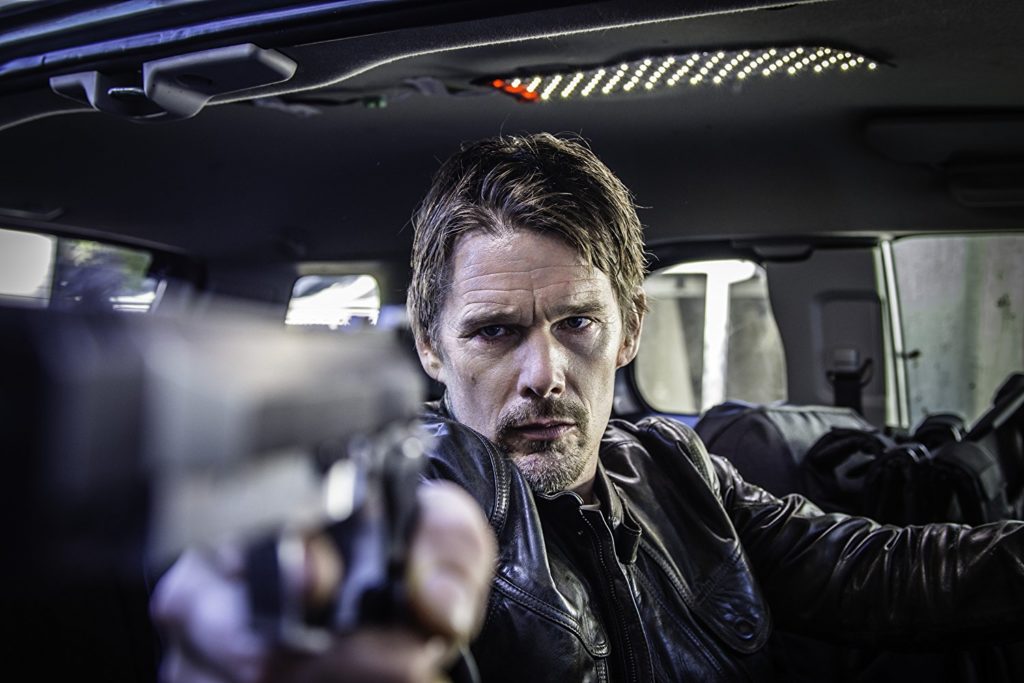
I’m thrilled to see you brought in Colin Follenweider as your stunt coordinator on this one.
He was awesome. I think it was his first stunt coordinating, to be honest, but I’ve worked with him a bunch in the last years, so I felt like he’d be a good fit. I basically was dropped off in Africa with me and him. That’s it. I didn’t know anybody else, so that’s a little bit of a deal. Ben [Nott] was great, but I didn’t know him before this. I didn’t know anybody, but they have good people over there in Cape Town.
How did you and Ben [Nott] go about designing the visuals and the shoot itself? Obviously, you storyboarded some of this. I’m sure you shot listed, but this isn’t all about shooting the action. You really add some nice visual touches with dutching of the camera. Some nice POV shots between Ethan and the little boy. What kind of discussions did the two of you have about the overall visual tonal bandwidth you wanted, but also to vary up and use the angles for storytelling?
Ben and I, like I said, we got along really good. Just during prep, we learned each other, and I was very big on making it just feel organic so that it wasn’t static. I wasn’t trying to do big swooping moves. Just make an organic, real feeling kind of thing. And so, again, just in talking things through, we both got on the same page pretty quick. Yeah, I feel like it worked out good. He was a good guy. I was lucky to get him.
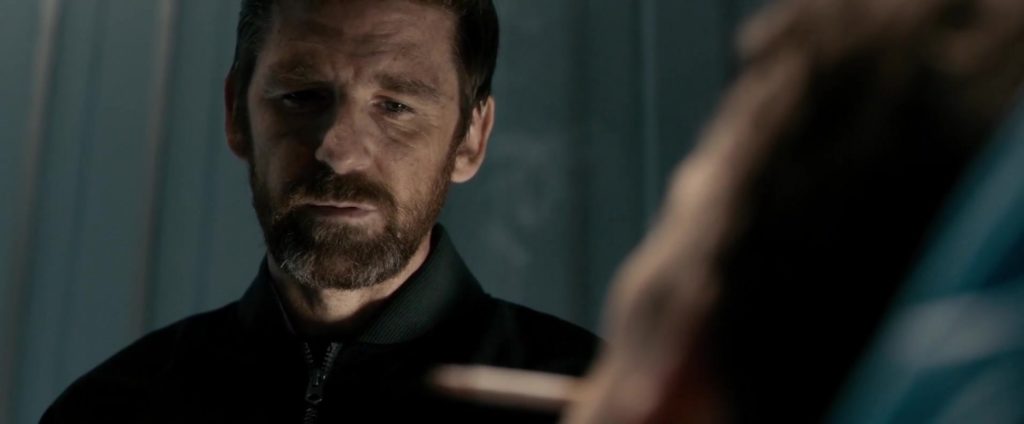
You really bring in some nice, intimate shots with Ethan’s character, Travis, with Paul Anderson’s character, Jim. You really let us connect with the characters. They’re not kept at a distance from the audience.
Right. No, and Paul was great, too. He was really a pleasure to work with. I didn’t know him either. I mean, I didn’t know anybody, but, yeah, no, he turned out to be great.
How much time did you and your editor, Elliot Greenberg, spend cutting this film?
Well, we had our ten weeks director’s cut, and I’ve got to be honest, I had a cut pretty quick. I had a cut in about five weeks that did not change a ton, to be honest. I ended up showing Thunder Road the cut of the film probably five, six weeks out. We made little changes that we kept. You always fine tune it, but it didn’t change drastically. The thing is, my producer, Jon Kuyper, he was adamant when we started. He was like, “Brian, cut this thing down!” He kept trying to get me to cut it down. At the end, it was like a 95-page script, so we didn’t have a lot of fat on it. It became where when you went into the editing room, I shot it in a specific way so it’s not like he had a whole ton of choices of “Let’s move this here, move that there.” It just didn’t really work, so it was kind of like just put it together. We ended up cutting two scenes out of the movie, but for the most part, it went together like we shot it. I like Elliot. He’s great.
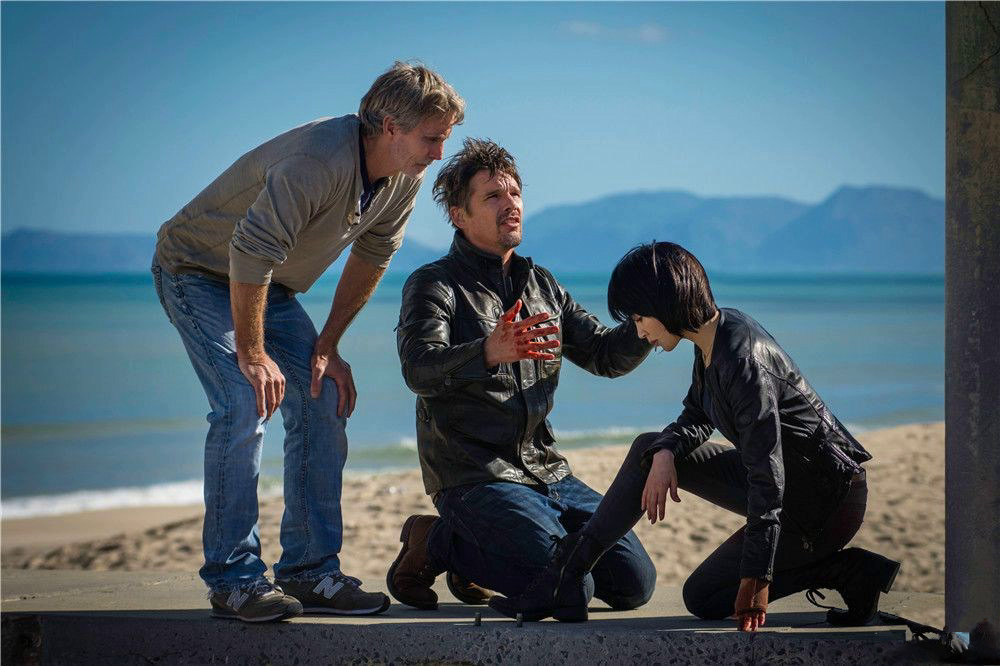
You shot tight! I love what Elliott did on “No Escape”, and what he did with Stallone and Schwarzenegger with “Escape Plan”. But with “No Escape”, he really varied things up, and it looked really good. I thought it was cut better than “Fantastic Four” was.
“Fantastic Four’ is interesting because that’s where I met Elliot. I met him there, and even though I didn’t work on “Fantastic Four”, I was part of designing the end sequence. It was just one of those kind of projects, and they brought me in to just help design it, but I didn’t actually film anything. But I was dealing with Elliot because I was just looking at what they had. I just really got along with him. But by that point, they had other editors there, so there were multiple editors on “Fantastic Four”. But I liked Elliot’s personality, so we hit it off, and he was great on this, too. I really like him.

How difficult was it to cast this film? Ethan Hawke has really just come into his “action” own over the past few years with “In A Valley of Violence” and “Magnificent Seven” and doing so much of his own stunt work. And I know he did all of his own driving in Courtney Solomon’s “Getaway”, so I think he was an excellent choice to play Travis here.
When we got Ethan, and that was a choice, because this is not like every other action movie. It definitely has a bit of Ethan Hawke drama depth to it, and that was part of the thing. It’s like, let’s make a movie that has an actor that’s not necessarily associated with action movies, and combine him with this. He did a lot of [the stunts] himself. He was good. He did it where he needed to do, and then every once in awhile we’d throw in someone where it made it easier on him. But, he did most of it.

Rutger Hauer, as Travis’ father-in-law. It’s always a thrill to see him. He’s got minimal screen time, but it really speaks to the character of who Travis then is. And then you get Paul [Anderson], and you get Liam Cunningham in there. How did your casting come into play?
Ethan actually was the one who suggested Rutger. They were friends. They’d done a couple films together. We all thought that was a really great idea because I really wanted someone that was older, and he’s like 71 which I thought was a perfect age. That’s the way the part was written, but it was interesting because when we were trying to cast, everyone kept bringing up names of younger people. I’m like, “No, the guy’s gotta be like 70 years old.” So, when Ethan brought up Rutger, I thought he was great, and we talked to him and he was wonderful to work with. He’s just a real pleasure. And then Paul came. We actually had Common. I don’t know if you know that, that we originally had Common playing the part of Paul, and he dropped out. He said it was to do with music stuff, last minute music. I had met Common and we had a really great conversation. He was excited to do it, and then he dropped out on us. When you get into last minute changes and you’re over there in Africa, it did a little bit come down to who could we get. And same with Liam [Cunningham]. People that were in England made it easier because it’s really hard to get guys to come over at the last minute for a short part. It’s a 24 hour flight, and to bring someone in for a couple days, and then, oh, you’ve got to go home, and then you come back, so it did get a little bit where it was better for us if we could cast people that were over on that end of the world. But, at the same time, same thing, we wanted actors that were, rather than necessarily super commercial, just real good actors. So I was happy with both Paul and Liam. We were all really ecstatic to get the guys.
I think the contrasts and the similarities in the characters between Jim and Travis, with having Ethan and Paul play the parts, I really like what you allowed them to do.
I made it really clear. I had a conversation with both in the beginning. It was just really important to me that we feel a strong bond to them. Otherwise, there’s no payoff with those two at the end. Paul, I don’t know if you know, he has a really thick English accent in real life, so I thought he did a really good job of doing an American accent. But I also think he did a really good job of just believing that they have a past together. I thought they both did really great at that.

Then here you are on a heavy action film and you’re also dealing with a young child, who is adorable I might add.
Yes, we were. He is adorable, and it was interesting because everyone kept trying to get me to cast someone else. You’re talking Ethan’s son, the one that he flashed back to. Yeah, he’s an adorable little guy. It was interesting because he’s a local, obviously, and they kept trying to get me to get someone older because the little guys like that don’t listen very well, and he was just phenomenal. He would really listen well, and was very attentive. He was great to work with.
Of course, you had the other young man, Jeremy Yong, who was playing Christopher, the son of Qing Xu’s character, Lin. He just stole my heart at the beginning where you’ve got Ethan kneeling down to him, talking about the backpack and Hulk and Wolverine. The attitude that Jeremy put in that! He was great as Christopher.
That was tricky one, because Qing Xu’s voice is dubbed through the whole thing. So, we were looking for an Asian boy that had a little bit of an English accent and it was just really difficult. It’s actually his first acting role. He’s like a superstar guitar guy. He’s been on “Little Big Shots” and “America’s Got Talent”, and all those. He’s used to performing, but it was his first acting role. So, I really enjoyed working with him, too. He was good. He was a good guy.
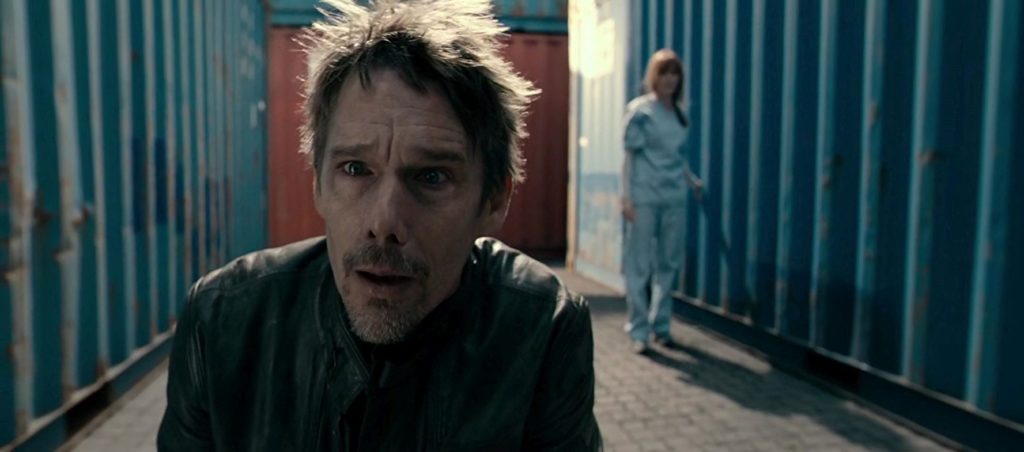
I’ve got to ask you about your sound because so often in action films dialogue gets compromised. Sounds become muddled. You don’t have any of that here. What were your considerations with your sound design and working with your sound guys? We can hear the distinction between the different weaponry. We can hear body hits, body slams. You’ve got a nice aural experience going on here.
Well, I will say they did give me top, top people toward the sound editing, mixing [Kelly Oxford, Sunny Warkentin]. They’re all great guys. And I agree with you, the sound is so important, and so just having the top quality people over in Cape Town is great. I know how important sound is, so we just really tried to do our best to not take it for granted. Try to make things as quiet as we can. Try to get whatever sounds are needed there. And then, again, I was fortunate that Basil and Kent Kubena, he was kind of my partner and he was awesome, they really want to make a quality film. They’re not trying to just make a film, and, “Hey, let’s sell it and get out and be done.” Everybody really has their heart in trying to make it as good as they can make it. So that’s just a key element is getting with a good production team that actually cares, and I definitely had that. That’s definitely something that I take with me that is probably one of the most important things, just having a team of people behind you that are on the same page and want to make a good film. And, you know, there’s a lot of times that that doesn’t happen. All the people involved in this? I was thrilled with their attitudes and what they were trying to do, so I feel fortunate. I would really push for that again, trying to make sure that that’s intact because it’s hard to make a film. You need all the help you can get.
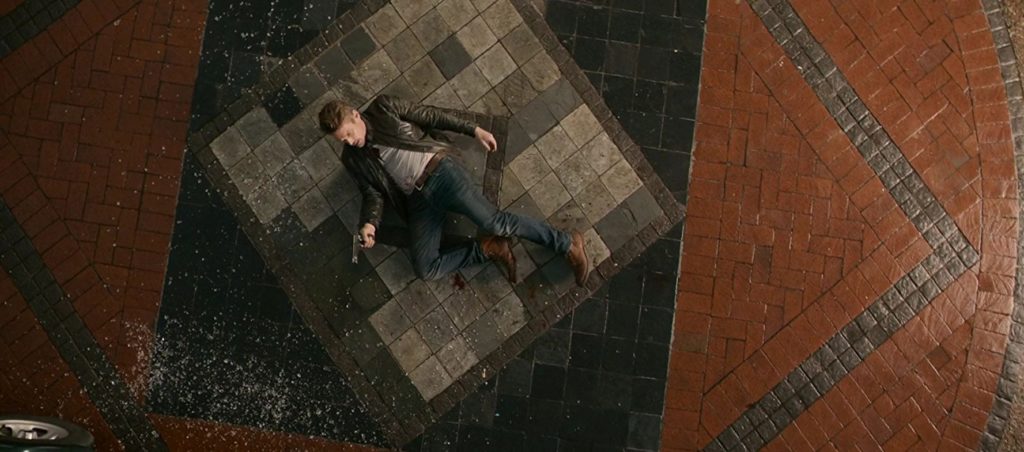
Of course, anytime you’re action films and practical stunts you’re also worried about safety, and unless you have the best, you run a risk there.
That’s one thing with the safety. Because I’ve been around so long, no matter how much I want something to look good, there’s just no way I’ll ever compromise on the safety thing. Again, that doesn’t mean accidents can’t happen. But that’s the biggest thing. People get rushed, and that’s how people get hurt, and I just won’t allow that to happen. It’s just not in my blood because I’ve seen accidents, and usually that’s why they happen is because people get rushed. That’s ingrained in me for a long time.
Now that you have made it through 24 HOURS TO LIVE, Brian, what did you learn about yourself in the directing process that you’ll now take forward hopefully in directing more films?
I knew all this. It’s stuff that I already knew. The script is so important to have all the story elements worked out. Prep as much as you can. There’s just so many things because once you start shooting on a film like this, there’s just no time to regroup. I think I just learned how to deal with it and I do believe I’ll be better. Hopefully, like you said, I continue on and keep doing them, and I think just with the experience, I’ll just continue to get better at learning what’s important and what’s not, and how to prep properly so that on the day. You’re always going to wing things and no matter how much you prep, things are organic, and they should be, but as much as I can get worked out ahead of time is just extremely important.
by debbie elias, interview 11/21/2017











